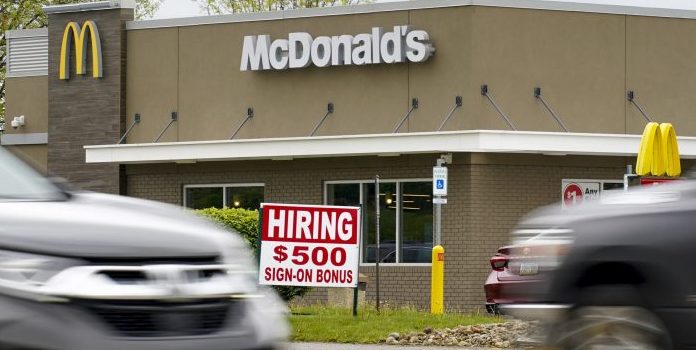Job creation in September came up well short of the anticipated numbers once again, MSNBC reported.
With an increase of merely 194,000 jobs according to the Labor Department—well under the predicted 500,000—economists have once again failed to explain what is wrong with the US economy.
“This is quite a deflating report,” said Nick Bunker, economic research director at job placement site Indeed.
“This year has been one of false dawns for the labor market,” he continued. “Demand for workers is strong and millions of people want to return to work, but employment growth has yet to find its footing.”
Despite the minimal increases in jobs, wages rose substantially. They increased by 0.6%, bringing the annual total of wages increases to 4.6%.
It appears that a labor shortage has caused the spike in wages, as the labor force actually shrank by 183,000 in September.
“Labor shortages are continuing to put severe upward pressure on wages … at a time when the return of low-wage leisure and hospitality workers should be depressing the average,” suggested Andrew Hunter, economist at Capital Economics.
Yet economists seem to have missed that the majority of the decline emerged not from the private sector, but the government itself.
In total, private payrolls actually added 317,000 jobs—much closer to the predicted improvement of 450,000 in the private sector.
Meanwhile, government jobs fell by a 123,000, skewing the total numbers.
Though the U.S. economy has lost around 5 million jobs since the coronavirus lockdowns began, there are still 10.9 million job openings—a record sum.
Despite the massive availability of jobs, around 8.4 million remain unemployed.
Some have attributed this bizarre turn to President Joe Biden‘s vaccine mandate, which has led thousands of Americans to quit their jobs.
Businesses across the country have faced staffing problems, especially hospitals and healthcare facilities.
“All of our hospitals are saying staffing is a big problem,” Lois Richardson, attorney for the California Hospital Association said. “We have fewer personnel than at the beginning of the pandemic and more patients.”

